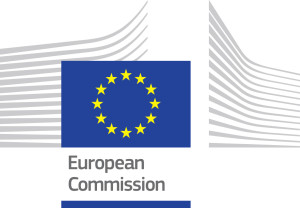European Commission
 The European Commission is an European Union Institution independent of national governments. Its job is to represent and uphold the interests of the EU as a whole. It drafts proposals for new European laws, which it presents to the European Parliament and the Council.
The European Commission is an European Union Institution independent of national governments. Its job is to represent and uphold the interests of the EU as a whole. It drafts proposals for new European laws, which it presents to the European Parliament and the Council.
It is also the EU’s executive arm – in other words, it is responsible for implementing the decisions of Parliament and the Council. That means managing the day-to-day business of the European Union: implementing its policies, running its programmes and spending its funds.
Like the Parliament and Council, the European Commission was set up in the 1950s under the EU’s founding treaties.
The Commission operates in the method of cabinet government, with 27 Commissioners ( 10 of them are women). There is one Commissioner per member state, though Commissioners are bound to represent the interests of the EU as a whole rather than their home state. One of the 27 is the Commission President (currently José Manuel Durão Barroso) appointed by the European Council with the approval of the European Parliament. The present “Barroso Commission” took office in late 2004 and should serve a five-year term until 31 October 2009.
The term “Commission” can mean either the College of Commissioners mentioned above, or the larger institution; including the administrative body of about 25,000 European civil servants
The European Commission AND Gender Equality
Gender equality is a fundamental right and a common value of the EU. It is a necessary condition for the achievement of EU growth, employment and social cohesion objectives. Gender equality policy contributes to meeting the challenges of globalisation, ageing population and demography.
Background: The 1957 Treaty that created the EU, made unequal pay for men and women discriminatory. In 1975, the EU passed its first equality law, which reinforced these Treaty provisions banning pay discrimination. A series of other laws followed which prohibited discrimination between women and men in employment, training, and working conditions, in statutory and occupational social security and in access to goods and services. Other laws dealt with maternity and parental leave and self-employed and assisting spouses The European Court of Justice has also promoted gender equality through its many sex discrimination judgments.
The EU backed this body of law with a dual strategy of gender mainstreaming (the promotion of gender equality in all policy areas and activities) and specific measures to promote this through a series of gender equality programmes supporting measures.
In 2006, the EU adopted a Roadmap for Equality between Women and Men. It identifies six priority areas for EU gender equality actions for the period 2006-2010:
- Equal economic independence for women and men
- Reconciliation of work, private and family life
- Equal participation of women and men in decision-making
- Elimination of gender stereotypes
- Eradicating gender-based violence and trafficking
- Promotion of gender equality outside the EU
- In addition, an EU funded European Institute for Gender Equality was established in 2006. It will act as a centre of excellence. Its tasks include raising awareness about EU gender equality policy, gathering and analysing data and developing new methodological tools. The Institute is not funded under PROGRESS.
Gender equality INSIDE the European commission
The principle of equality for men and women is set out in the revised Article 1e of the Staff Regulations http://ec.europa.eu/civil_service/docs/toc100_en.pdf, which provides:
“In the application of these Staff Regulations, any discrimination based on grounds such as gender…shall be prohibited”.
However, despite progress already made, there is considerable scope for improvement in the representation of women in management posts and in “traditionally men jobs”.
The fourth action programme for equality (2004-2008) (PDF) is implementing specific objectives to:
- address barriers to career development of women;
- reconcile personal and professional life;
- improve the gender balance;
- make a comparative study of careers;
- sensitise staff to gender equality and equal opportunities;
- protect the dignity of the person in the workplace.
- Implement, monitor and evaluate
Figure source: fourth action programme for equality
References
- The European Union's commitments and actions for gender equality in development cooperation
- European Commission Website
- “What is the Commission?”
See also
- European Parliament
- Margot Wallström
- Dalia Grybauskaite
- 50/50 Campaign for Democracy
- Event:2009-06-03 End Campaign
External Websites and links
- Equality between women and men: Summary of legislation 2008 Scadplus (many languages)
- Report on “Equality between women and men – 2008”
- Last news about gender equality in the EC
- Gender Equality and External Cooperation
- Eurostat
- The life of women and men in Europe – A statistical portrait, Eurostat, 2008
- Women in power still trapped by glass ceiling, EU report in English, 2008
- Links on gender equality inside the European Commission:
Booklet fourth action programme for equality (PDF)
Staff figures 2009 (html and PDF)


